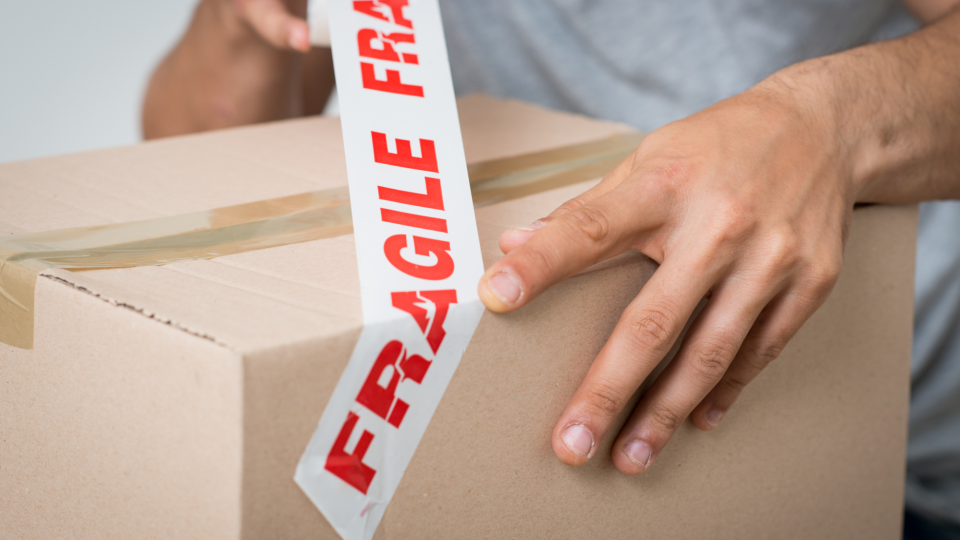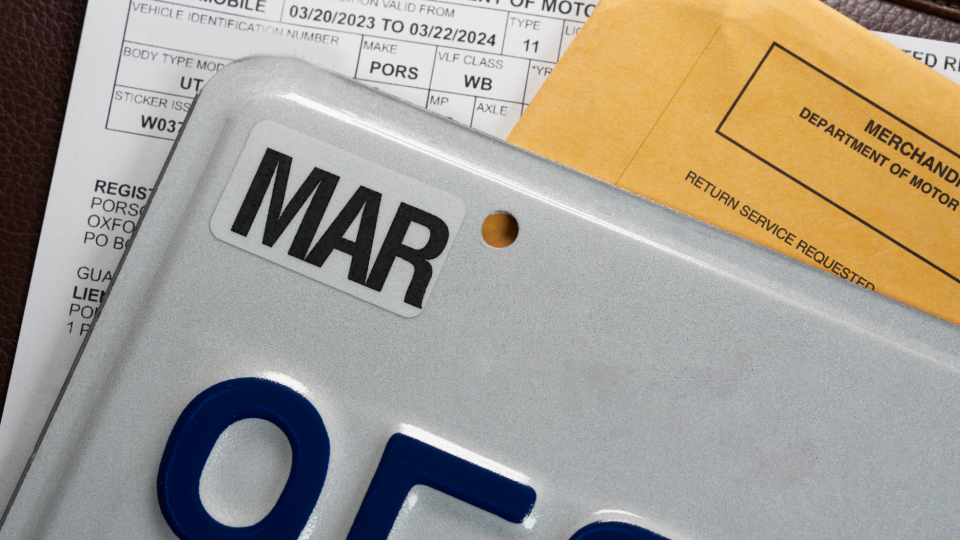How to move out of state in 9 steps (2024 Guide)
Content is created by CNN Underscored’s team of editors who work independently from the CNN newsroom. When you buy through links on our site, CNN and its syndication partners may earn a commission. Learn more

Moving is always a chore, but moving between states can come with extra headaches, especially if you aren’t prepared. In addition to moving all of your items a long distance, you’ll have to abide by the laws of the new state you’re moving to, which can include details like promptly updating your license and vehicle registration.
To understand how to plan to move out of state, make sure you know where you’re moving, how to pack efficiently and how to hire a moving company. Here’s how to save time, money and frustration while moving out of state.
1. Research your new state
Start by researching the cost of living in the state you’re moving to — you don’t want to be shocked when you see the price of housing, food, public transportation or anything else you may need. Inputting your current city and the one you’re moving to into the calculator will provide valuable insight into how far your paycheck will go.
Speaking with an accountant in your new state is another good idea. Your income taxes may differ, and so will dividend income on your investments.
2. Find a new home
You’ll want to ensure the neighborhood you’re moving to can accommodate your needs. Begin speaking with real estate agents and looking at properties online.
Look into community groups on social media sites like Facebook. For example, if you prefer quiet areas, see if the locals say anything about noise. If you can’t live without museums or movie theaters nearby, use Google to ensure you can meet your cultural needs.
If you can’t visit the state before moving, many real estate companies offer virtual tours and extensive photos of properties. Many of these real estate companies are publicly rated, so you can gauge their quality before working with them by checking Realtor.com, the Better Business Bureau, Yelp and Google.
If you can afford to visit and want to avoid committing to a neighborhood before experiencing it, an option like an Airbnb stay can offer an honest feel for a community to help you decide. Use the visit to speak with the locals and check their vibe.
3. Create a moving budget

How much it will cost to move out of state will vary depending on your needs and the distance you’re going.
The average cost to hire movers is $1,625, but prices can range from as little as $450 to upwards of $12,700, depending on the details of your move. Your total cost will depend on your home size, the distance of your move, your requested additional services and which professional moving company you hire. Using a moving cost calculator can help you estimate the average price. And don’t forget the cost of shipping your car if you’re not driving it.
Pricing for moving is usually based on weight and distance, so Eily Cummings, the vice president of corporate communications for Mayflower, a nationwide moving company, advocates for getting rid of stuff you don’t need, which you can do by donating or having yard sales. Moving lighter is also an excellent way to simplify the process and give you a fresh start in a new state.
There will be additional charges beyond the actual costs of transporting your items, such as paying security deposits on your new apartment or home if you’re renting and signing up for new insurance. Also, account for details like airfare, meals and anything else you must budget for the move.
4. Create a moving timeline

Because of the many moving parts, you should allow yourself three to six months to prepare for an out-of-state move.
Here’s an example of how to structure your timeline, with some helpful tips:
12 weeks from your move:
Organize a file (digital or hard copy) containing everything about your move.
Begin to research and interview potential moving companies and go through each room in your house, deciding what you will keep and throw away or donate.
10 weeks from your move:
Purchase items for packing. To save money, consider reaching out to friends, family or neighbors who have moved in the past year to see if they still have supplies.
Sell or donate the items that won’t be making the move with you. If you have a few items, consider using Craigslist or Facebook Marketplace. If you have more items, consider a garage sale (be aware that some towns require permits).
Get your paperwork in order. This can take some time, so be sure to reach out to your doctor for medical records, your children’s school for school records and anything else that you will need to navigate entering a new state and school system easily.
6 weeks from your move:
Hire a moving company. The more time you give, the better, as you don’t want to find out your first choice is no longer available for that time frame.
Reach out to your current utility providers, internet providers and anyone else you’re paying monthly fees to, and let them know you’ll be leaving.
4 weeks from your move:
The general rule is to tell your landlord 30 days in advance that you will be moving. Follow the instructions about giving notice in your lease to avoid any potential conflict.
Begin packing the items you don’t need for everyday use.
If you’re driving a car to your new home, make sure it’s in good driving condition. If you plan to fly, purchase your airline tickets.
Speak with your rental and car insurance agents about transferring your policies.
2 weeks from your move:
Begin packing more of the items you use daily, as you won’t be able to wait until the day of the move to pack everything.
Throw away perishables and only buy food for the remaining two weeks to avoid waste.
1 week from your move:
Confirm with movers and ensure you have a suitcase packed for the move if you intend to stop anywhere on the road.
Ensure that any documents you need, like a passport, are on hand.
Don’t forget Fido! Make sure you have a plan for your pets to be safe and out of the way during the move.
Moving day:
Take a breath. This may be stressful, but do your best to relax.
Stay with the movers so you can tell them what is the most valuable and ensure everything makes it into the truck(s).
5. Hire professionals for your move

Not all moving companies are the same, and you’ll want to ensure the one you choose will do everything you want, whether it is full-service or just transporting the items you already boxed yourself.
Because you’ll be moving farther than around the corner, look into multiple moving companies to ensure you’re getting a trustworthy company. Speak with at least three moving companies to get the best quote. Some moving companies will even allow you to GPS-track your belongings in real time.
Cummings recommends you start with referrals from friends and family or go with a name you already know. She also recommends asking moving companies these essential questions:
Are you licensed by the Federal Motor Carrier Safety Administration (FMCSA)? Interstate movers must be registered with the federal government, so be wary of any entity that isn’t licensed with the FMCSA. This administration also works to reduce crashes by enforcing safety regulations.
Do you have a U.S. Department of Transportation (DOT) number? This is mandatory for interstate movers and is a tool that monitors a company’s safety. It also lets you look into the company and see complaints against it.
Do you have locations at both origin and destination? You want someone to help you wherever you go. If the company doesn’t have legal authorization to operate in your destination state, it may have to broker out a portion of your move to a different company, giving you less control.
How long have you been in business? You want a company that’s been around for at least 10 years and has the experience and track record to trust with all your belongings.
Does the company offer virtual or on-site estimates? Companies providing virtual or on-site estimates can also typically offer you a fixed price estimate that won’t surprise you when it’s time to pay the bill.
Does the company have a physical location? A moving company that can hold trucks and offer storage would need a physical address. Be wary of any company without one.
How long will the delivery spread be for your belongings? You want to know when you can expect your items to arrive so you have essentials in your new home.
6. Pack and organize your belongings

A designated packing area with supplies — boxes, packing tape, markers and bubble wrap — will make the move more efficient. Label anything fragile on the side of the boxes.
“If you choose to pack yourself, be sure to allow enough time, so you’re packed before the movers arrive,” said Cummings. “All too often, we see people who underestimate the amount of time it takes to pack and they’re not ready on move day.”
Cummings notes that many customers will pack most of their items but leave the fragile items to the experts. A packing calculator can also be a helpful tool to help you decide how many boxes you’ll need. Additionally, if you have suitcases, use them for their wheels, which can help make moving items more manageable.
Set aside some key documents to keep on your person during your move. These include:
Personal documents: Birth certificates, marriage licenses, passports
Property papers: Moving information, leases or mortgages, home or renters insurance documentation
7. Notify banks and other important institutions
When it comes to updating your address with important institutions, most banks will allow you to create the change through their websites or apps.
For tax-related concerns, the IRS offers a few different methods for updating your information. You can:
Submit a signed written statement.
File your new address on your taxes.
Fill out either Form 8822 or Form 8822-B.
Additionally, information on other important government services, such as Social Security, veterans benefits, immigration and others can be found on the IRS website.
Lastly, to alert the U.S. Postal Service, you can use its simple online tool to update your address.
8. Update your DMV records

Look at your new state’s DMV website to understand its specific demands. If you’re moving with a car, many states will require your license and registration to be from the same state, though this isn’t always true. Depending on the state, you may be penalized with fines or up to a year in jail if you don’t update your license within 30 to 60 days.
9. Settle into your new home
Once in your new state, you’ll want to explore what it offers. If you don’t know anyone, it can be daunting to meet new people. Fortunately, apps like Patook, Meetup and Nextdoor are designed to help with this problem.
Additionally, joining a gym or a volunteer group can be a great way to meet people with mutual interests.
Bottom line
Taking the proper steps and giving yourself ample time can save you money and anxiety when planning to move out of state. By doing your research, speaking with different moving companies and understanding where you’re going, you can set yourself up for success. Additionally, thinking ahead and making sure you have enough money, cutting down on clutter and knowing where you’re staying can all help make the move easier.
Frequently asked questions (FAQs)
Note: The prices above reflect the retailers' listed price at the time of publication.
For more CNN news and newsletters create an account at CNN.com

